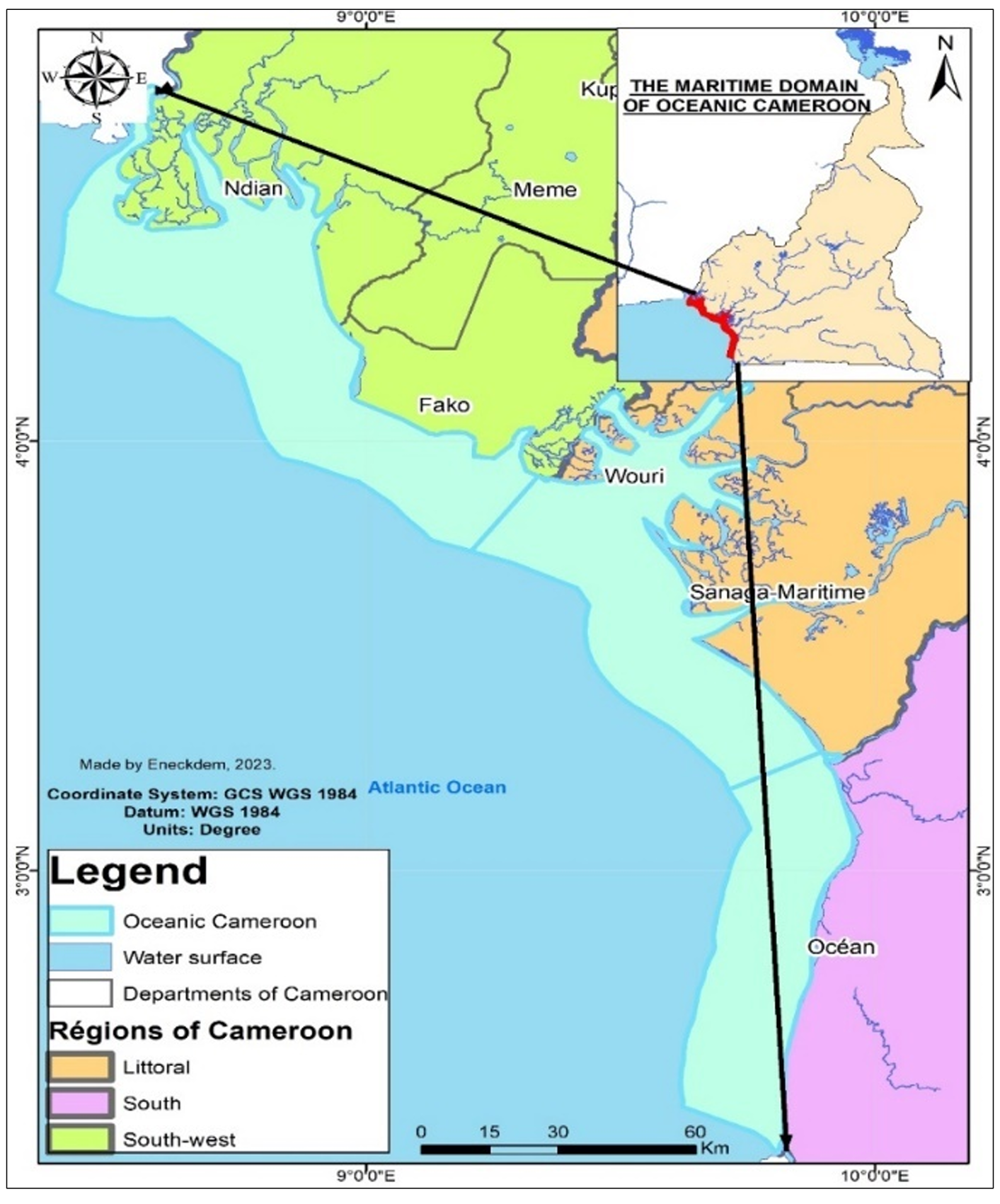Found 2 results
Open Access
Article
26 June 2025Assessment and Spatialization of the Potential of Marine Renewable Energies in the Gulf of Guinea: Case of the Cameroonian Coast
This study explores, through mathematical simulation and Geographic Information Systems, the electricity production potential of Marine Renewable Energies (MRE) on the Cameroonian coast. The study uses data from the National Institute of Cartography and, in the absence of in situ oceanographic observation, data from the National Oceanic and Atmospheric Administration and those of Copernicus Marine Services, to determine and identify, after calculations on Excel and spatial representation on ArcGIS 10.2.2, areas with high MRE potential. The analyses carried out show that the Cameroonian coastline is full of significant potential for the development of MRE. Indeed, with a potential of approximately 6 kW at sea and approximately 1 kW on the coast, current energy constitutes a capitalizable opportunity. Concerning wave energy, the average production potential of the Cameroonian marine area is approximately 3.37 kW/m. However, it is much higher on the Kribi coast (between 4 and 7 kW/m). Furthermore, significant potential for tidal energy can be identified in the Wouri estuary, as well as in other sectors such as marine thermal energy and osmotic energy, although this requires further analysis to be better understood. These results would help promote research on these energies in Cameroon.

Open Access
Article
20 February 2024Wind Influence on the Electrical Energy Production of Solar Plants
Solar energy, as a clean source of energy, plays a relevant role in this much desired (r)evolution. When talking about photovoltaics, despite the multiple studies on parameters that affect the panels operation, concrete knowledge on this matter is still in an incipient stage and precise data remains dispersed, given the mutability of outer factors beyond technology-related properties, hence the difficulties associated with exploration. Wind is one of them. Wind loads can affect the temperature of photovoltaics, whose efficiency is reduced when higher temperatures are reached. The viability of wind as natural cooling mechanism for solar plants and its influence on their electrical energy production is studied in this research work. Some appropriate results were achieved: depending on the module temperature prediction model used and on the photovoltaic technology in question, solar panels are foreseen to be up to approximately 3% more productive for average wind speeds and up to almost 7% more productive for higher speeds. Taking into consideration that wind speed values were collected in the close vicinity of the modules, these results can be proven to be even higher. That being said, this article contributes with accurate insights about wind influence on electrical energy production of solar plants.
